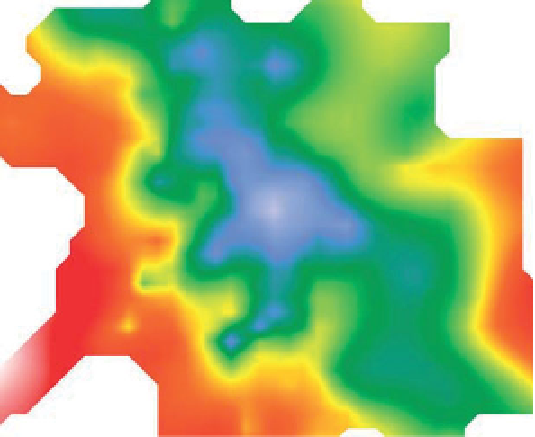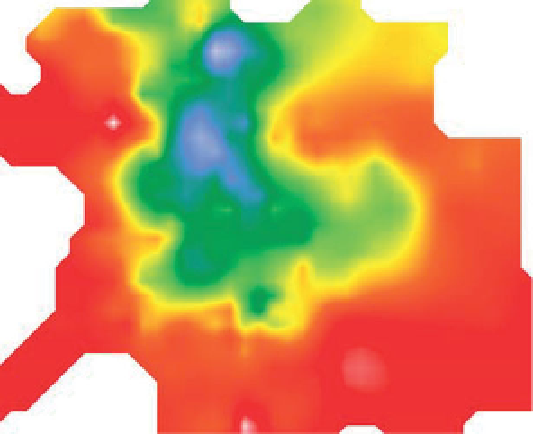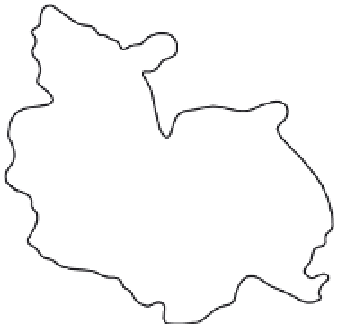Geoscience Reference
In-Depth Information
a)
b)
105°10´
>0.5 ppm Ag
>0.1 ppm Au
>10 K
2
O/Na
2
O)
38°45´
38°45´
Mines
Latite/phonolite/syenite/basalt
Phonolite/latite breccia
Granitoids (Precambrian)
0
20
105°10´
Kilometres
c)
d)
9,793,200
-
2100
gu
gu
-
2250
9,791,80
0
38°45´
38°45´
Gravity
stations
105°10´
105°10´
Figure 3.18
Geological and geophysical data from Cripple Creek. (a) Simpli
Te mineralisation and
associated hydrothermal potassic alteration, (c) gravity before correction for height and topography, and (d) complete Bouguer anomaly.
The gravity images were created from open-file gravity data. Geological data based on diagrams in Kleinkopf et al.(
1970
).
ed geology, (b) distribution of Au
-
Ag
-
variations of the field due to magnetic materials in the
crust that are of interest in mineral exploration. The
average strength of the Earth
direction and strength over the Earth and at time scales
which are signi
cant for exploration surveys. These
short-term temporal variations are a source of noise during
magnetic surveying, and corrections can be applied to
compensate for them.
The instrument used to measure the magnetic
field is
called a magnetometer. Magnetometers used in exploration
make absolute measurements, although only relative dif-
ferences are actually required, and these are usually the
scalar strength of the
field (TMI). The strength of the
field
in a particular direction, i.e. a component of the
field, is
made with a vector magnetometer. The instruments are
relatively small and lightweight, and measurements are
routinely made from the air, on the ground and downhole.
Magnetic surveys conducted in the air with a fixed-wing
field is about
50,000 nT and variations of geological origin may exceed
10,000 nT, which is about 20% of the
field strength, so
variations can be extremely large compared with the
very small in
uence that local geological features have on
the gravity
field. However, these large variations are rare.
More common are variations of
'
s magnetic
tens or hundreds of
nanoteslas.
Unlike the gravity
field, the Earth
s magnetic
field is
fundamental in determining the strength and shape of
crustal magnetic anomalies. Without it there would be no
magnetic anomalies and no formation of remanent mag-
netism. The magnetic field changes significantly in both
'








































































































































































































































































































































































































































































































































































Search WWH ::

Custom Search